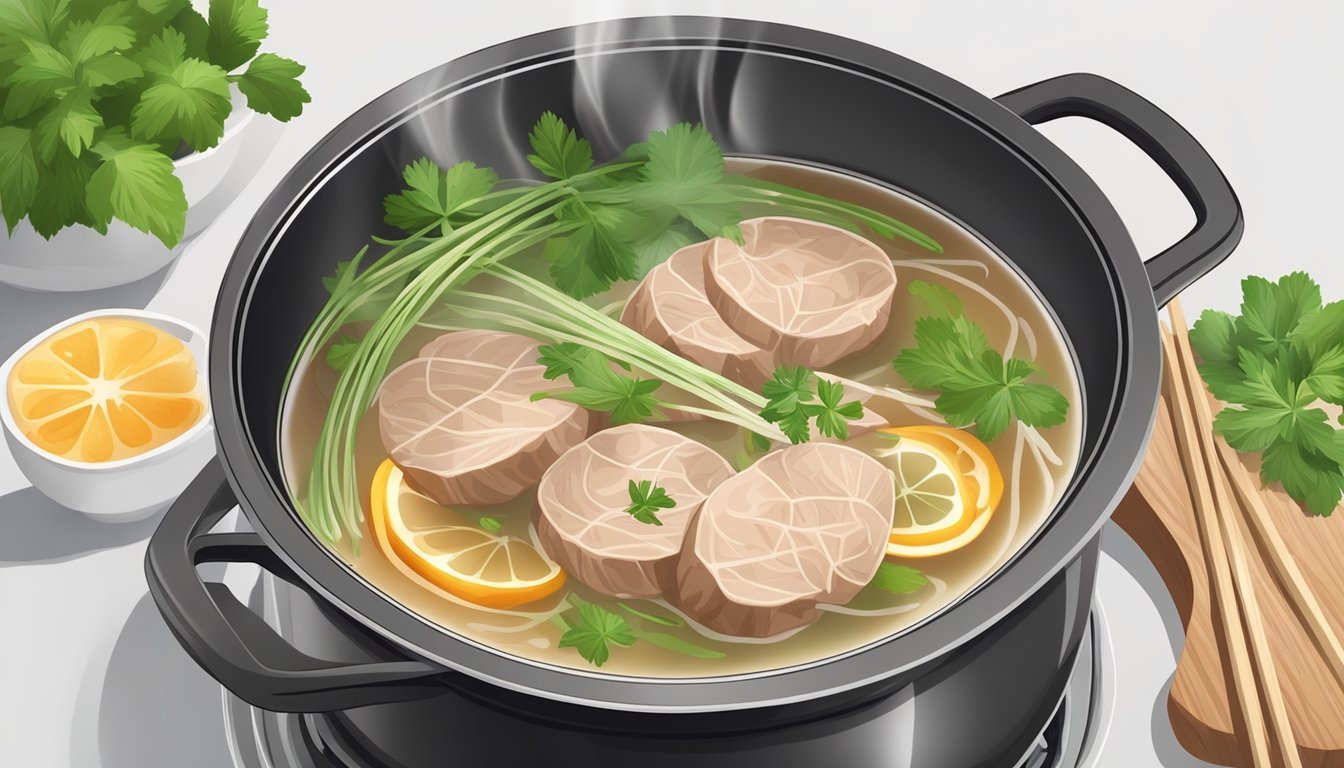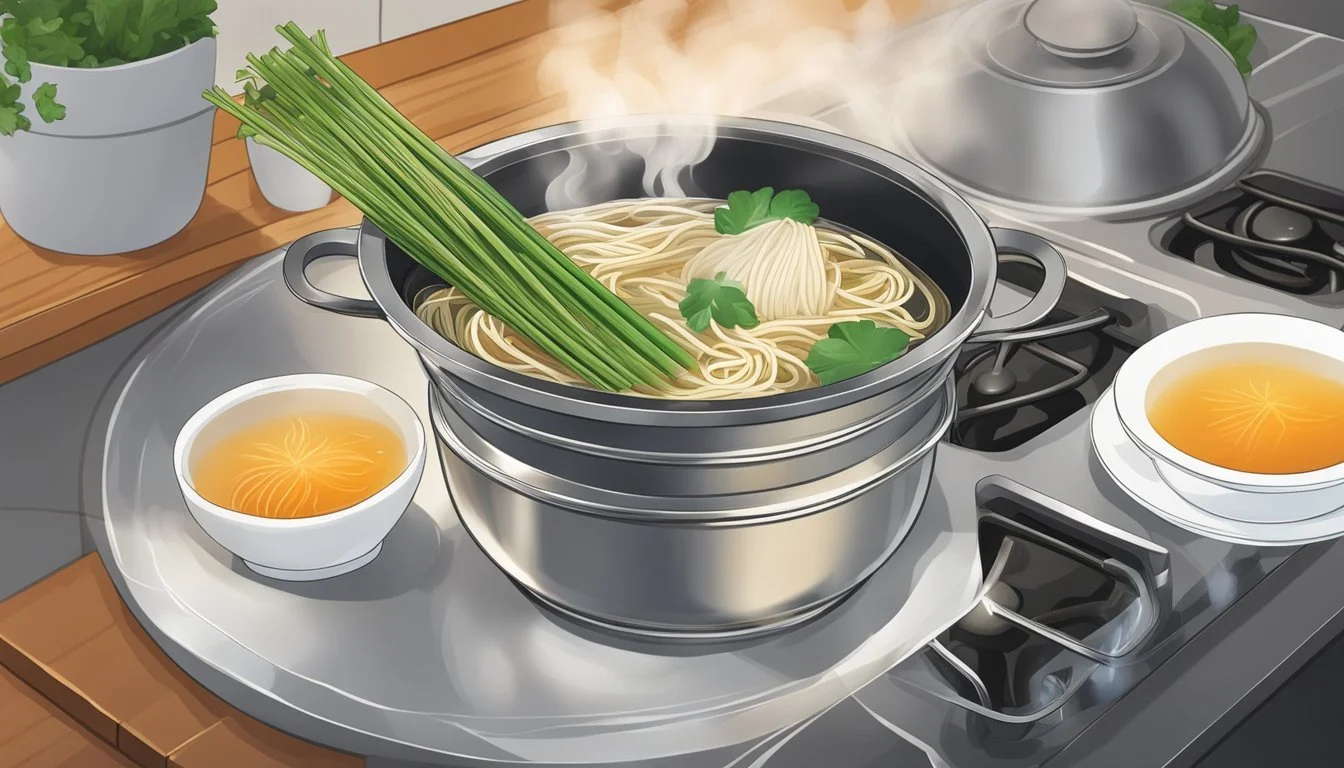Best Way to Reheat Pho
Maintaining Clarity and Flavor in Your Broth
Reheating pho, the beloved Vietnamese noodle soup, requires careful attention to maintain its clear broth and the delicate balance of flavors. Preserving the integrity of this dish during reheating is essential for enjoying pho as it was intended. The best methods prioritize gentle warming to keep the broth clear, prevent the noodles from becoming mushy, and ensure that the meat and vegetables retain their texture and taste.
A common consensus among culinary experts is that the components of pho should be reheated separately. The broth, the soul of the dish, should be brought to a simmer on the stove to achieve the right temperature without becoming cloudy. Noodles, on the other hand, need a more cautious approach, often a quick dip in hot water is all that's required to restore their tenderness.
When it comes to reheating meat and vegetables, the goal is to avoid overcooking while ensuring they are heated through. Using a steamer or a pot with a small amount of water can yield the best results, gently warming these add-ins without compromising their texture. By following these guidelines, one can ensure that the reheated pho experience closely mirrors the freshness of a newly made bowl.
Understanding Pho
Pho, a traditional Vietnamese noodle soup, commands attention for its aromatic broth and harmonious ingredients. Proper composition and the broth’s clarity are central to its authentic taste and presentation.
Composition of Pho
Pho consists of a precise balance of noodles, usually made from rice, and a variety of meats, which can range from thinly sliced beef to chicken. The soul of pho lies in its broth, a complex and fragrant liquid simmered with a blend of spices, including cinnamon and star anise. Its unique aroma and flavor are a result of this careful spice selection. Fresh herbs (how long do fresh herbs last?) like basil and cilantro are often added at the end to enhance its taste and fragrance.
Significance of Clear Broth
A clear broth is the hallmark of well-made pho. The clarity is both visual and sensory, suggesting a clean taste free from murkiness that ensures the subtle interplay of spices like star anise and cinnamon is detectable. Achieving a translucent broth requires attentive simmering and skimming, a step that reflects the meticulous nature of Vietnamese culinary tradition. The clarity of the pho broth is not just an aesthetic attribute, but also a testament to its purity and a sign of a chef's expertise in crafting this iconic dish.
Pre-Reheating Preparation
Pre-reheating preparation is essential for maintaining the clearness of the broth and the integrity of pho's flavors. Effective storage and separation of ingredients are crucial to the process.
Storing Leftover Pho
When storing leftover pho, it's imperative to use airtight containers to prevent any contamination and preserve the quality of the dish. Separate containers should be utilized for the broth and the solids like noodles and meat to ensure they maintain their texture. Containers must be refrigerated as soon as the pho has cooled down to safe temperatures, which helps in avoiding bacterial growth and maintaining food safety.
Storage Containers: Utilize clear airtight containers for visibility and to seal flavors.
Refrigeration vs. Freezing:
Refrigerate: Ideal for consumption within 2-3 days.
Freezer: Store for up to a month for longer shelf life.
Process:
Allow pho to cool down before storing.
Portion into suitable container sizes for easy reheating.
Separation Techniques for Ingredients
The separation of the solid ingredients from the broth is a critical technique for proper reheating. Noodles and meats should be stored in separate containers from the broth. This practice prevents the noodles from becoming soggy and the meats from overcooking, which could cloud the broth.
Containers: Choose size-appropriate containers to accommodate each ingredient separately.
Broth: Store in its own container, keeping it clear and allowing for easy removal of fat once solidified.
Food Safety: Airtight containers reduce the risk of ingredient cross-contamination.
Reheating Methods
Proper reheating of pho is crucial to preserve the broth's clarity and maintain the rich flavors. Attention to temperature and even heating contributes greatly to refreshing leftover pho effectively.
Stovetop Reheating Method
For the stovetop method, one should use a pot suitable for the amount of broth to be reheated. The broth should be poured into the pot and heated over a medium flame. It's important to prevent the broth from reaching a rolling boil as this can make it cloudy and alter the taste. Instead, one should aim to gently simmer the broth until it is thoroughly heated. One can then turn off the heat and prepare to pour the broth over the other components.
Steps for Stovetop Reheating:
Transfer the broth to a pot.
Heat on medium until a simmer is achieved (not a boil).
Stir occasionally for even heating.
Once hot, remove from stove and use immediately.
This method typically results in a clear broth and retains the desired flavors.
Microwave Reheating Method
For reheating pho broth in a microwave, one should place the broth in a microwave-safe container. The broth should be covered with a microwave-safe lid or loosely placed plastic wrap with holes to allow steam to escape. This prevents splattering and aids the distribution of heat.
Steps for Microwave Reheating:
Place broth in a microwave-safe container.
Cover with a lid (vented) or plastic wrap (pierced).
Set microwave to a medium temperature setting.
Heat in 30-second intervals, stirring in between, to ensure even heating.
Utilizing the microwave method is faster but requires attention to avoid overheating, which can alter the flavor of the broth.
Maintaining Quality and Safety
When reheating pho, it is crucial to maintain the quality and safety of the dish to preserve its clear broth, flavor, and texture. Adhering to proper food safety guidelines and heating techniques ensures consistency and prevents overcooking.
Ensuring Even Heating
To achieve even heating, one should gradually warm the pho on a low to medium heat setting, whether using a stovetop or a slow cooker. It is essential to stir the broth occasionally to maintain a uniform temperature throughout the soup. The ideal cooking time for the broth should not exceed a simmering point, as excessive heat can lead to a murky broth and alter the delicate flavors.
Slow Cooker Method:
Heat on low for 2-3 hours
Stir occasionally
Stovetop Method:
Use low to medium heat
Stir periodically to prevent sticking
Avoiding Overcooking
Noodles, meat, and vegetables should be reheated separately from the broth to prevent them from becoming overcooked. These components are best warmed using a steamer basket or a separate pot with gentle heat until they reach the desired tenderness. Combining them with the hot broth only at the time of serving will preserve their texture and enhance the overall eating experience.
For Noodles and Meats:
Reheat in a steamer basket until tender
Avoid direct boiling in the broth to maintain texture
Finishing Touches
The final steps of reheating pho are crucial for preserving the soup's integrity and enhancing its flavors. It's the garnishes and toppings that provide the freshness and texture that elevate the dish.
Re-Adding Garnishes and Toppings
Once the pho is thoroughly heated, it's time to reintegrate garnishes and toppings to restore the soup’s vibrant character. Freshness is key, so one should always use fresh garnishes. The following elements should be prepared and served alongside the pho for guests to add to their liking:
Bean sprouts: Offer a crunchy contrast to the soft noodles.
Basil leaves: Typically Thai basil, for a peppery, anise-like flavor.
Lime wedges: Squeeze to add acidity, balancing the rich broth.
Sliced jalapeños: For heat that complements the pho’s depth.
Fresh herbs: Additional herbs such as cilantro can be chopped for a bright finish.
Fresh toppings reinvigorate the pho with textures and flavors that define the dish. Guests can use chopsticks and tongs for easy handling and personalization of their bowl.
Serving Suggestions
Pho is best served hot with the additional elements presented on the side to ensure each person can tailor their servings. The presentation and organization of the accompaniments matter. Use separate bowls or a platter with sectioned compartments to display:
Garnishes: neatly arranged for visual appeal and ease of selection.
Herbs and veggies: ensure they are washed, dried, and slice them accordingly.
Seasoning: such as hoisin sauce and sriracha, for guests to adjust the flavor profile as desired.
Consider the balance of flavors and the warmth of the broth when serving pho. Encourage guests to add their toppings while the broth is steaming to allow for a slight wilting of the herbs, a quick softening of the bean sprouts, and a release of essential oils from the basil leaves, which is crucial for an authentic pho experience.
Storage and Longevity
Proper storage techniques are crucial for maintaining the clarity and flavor of pho broth. Adhering to recommended refrigeration and freezing practices ensures that the soup retains its quality, while labeling and tracking dates help monitor freshness and prevent waste.
Refrigeration and Freezing Recommendations
When storing pho in the refrigerator, it is best used within two to three days to maintain optimal freshness. The soup should be stored in air-tight containers to preserve the quality and prevent contamination from other foods. To extend the shelf life, pho can be frozen. Freezing pho is a viable option for keeping the broth clear and maintaining its rich flavors. Prior to freezing, separate the broth from any meats, noodles, or garnishes to avoid texture changes upon defrosting. The broth alone can be successfully frozen for up to three months.
Refrigerator: Store pho for 2-3 days.
Freezer: Freeze for up to 3 months.
Steps for freezing pho:
Cool the broth to room temperature.
Pour broth into an air-tight container or heavy-duty freezer bag.
Expel as much air as possible before sealing to prevent freezer burn.
Labeling and Tracking Dates
To ensure the pho is consumed at its best quality, labeling containers with dates becomes essential. This practice aids in tracking how long the pho has been in storage, allowing for better meal planning and food safety.
Labeling checklist:
Clearly mark each container with the content description.
Include the date of freezing or refrigeration.
Note the expected shelf life based on storage method.
By following these storage guidelines and keeping a meticulous track of date labels, pho enthusiasts can safeguard the integrity of their broth, ensuring that every bowl is as delightful as the first.
Conclusion
Reheating pho is as much about preserving the essence of this comfort food as it is about achieving the right temperature. It's essential to maintain the clarity of the broth and the integrity of its flavors. To ensure this:
Heat the broth separately, ideally on the stove. Slow and steady warming prevents cloudiness and helps retain the desired aromatic profile.
Reheat components individually. Noodles and proteins should come to the right warmth without overcooking, particularly the delicate slices of meat often found in pho.
One should avoid the microwave if possible, as it may unevenly heat the pho and alter its texture and taste.
A clear broth speaks volumes about the care put into the reheating process—a testament to honoring the Vietnamese tradition that pho represents. With these methods, enthusiasts can rest assured their next bowl will be as satisfying as the one served fresh at their favorite spot.




